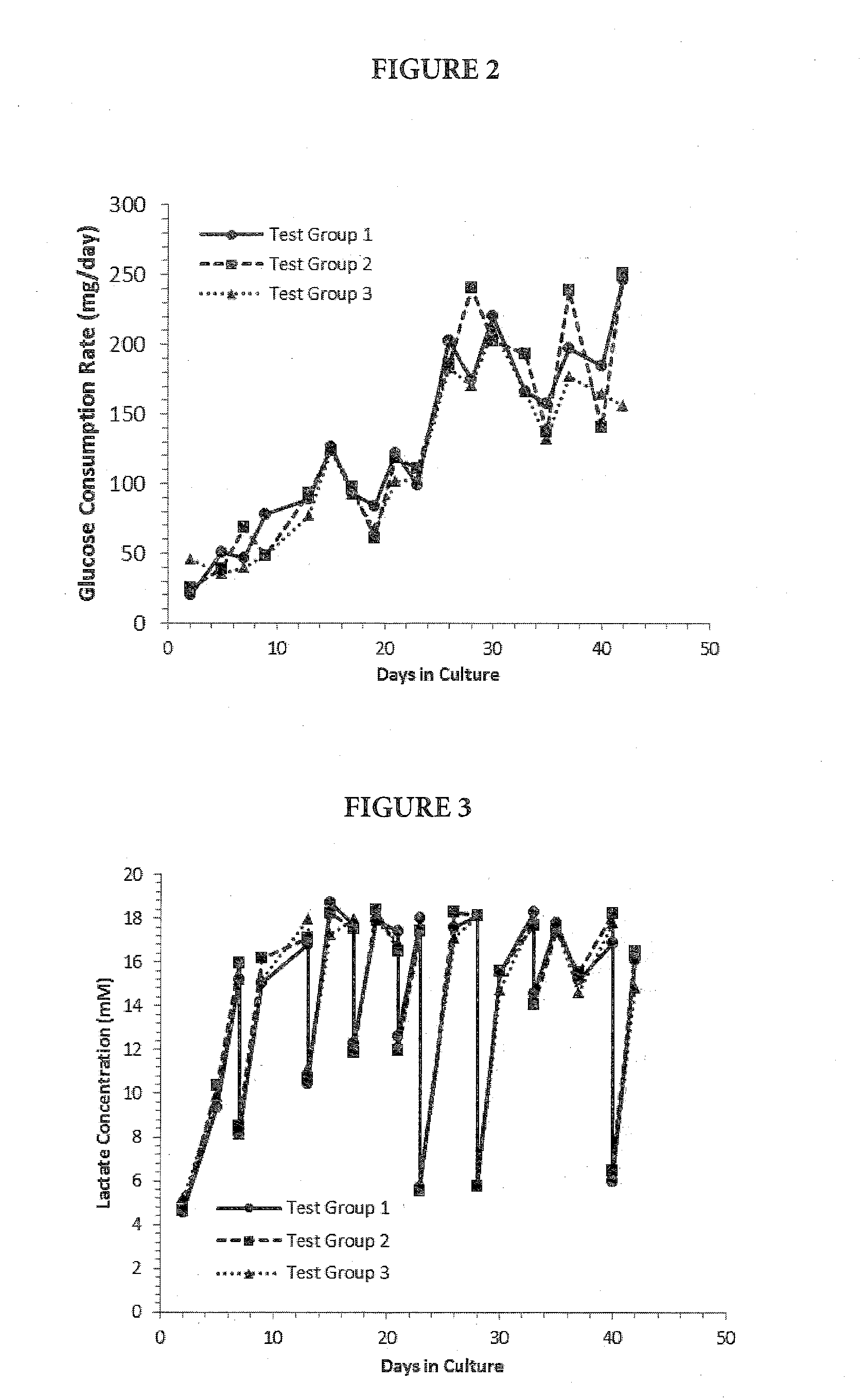In Vitro Tumor Metastasis Model
a tumor metastasis and tumor technology, applied in the field of cancer biology, can solve the problems of low and unpredictable tumor engraftment rate, confounding influence, loss of human stromal cells normally associated with tumors, etc., and achieve the difficulty of identifying and isolating metastatic cancer stem cells
- Summary
- Abstract
- Description
- Claims
- Application Information
AI Technical Summary
Benefits of technology
Problems solved by technology
Method used
Image
Examples
example 1
[0074]Establishment of a Metastatic Pancreatic Tumor In Vitro
[0075]A metastatic pancreatic tumor (pancreas to liver) weighing approximately 1 gram was minced and partially dissociated enzymatically before approximately ⅕ of the dissociated mass was infused into a RealBio D4™ Culture System bioreactor. The mixed population of tumor and associated stromal cells was maintained in the bioreactor by circulating Iscove's Modified Dulbecco's Medium (IMDM) supplemented with fetal bovine serum (FBS) (10%) and antibiotics through both the upper and lower fluid chamber. The bioreactor was maintained in an incubator at 37° C. with a 5% CO2 environment. Samples of the culture medium were collected from the lower compartment of the bioreactor three times per week to count the number of cells shed by the cultured tumor and to monitor metabolic activity of the culture (glucose consumption and lactate production). After 29 days in culture, a sample of the cells migrating out of the cultured tumor wa...
example 2
In Vitro Production of Circulating Tumor Cells (CTCs) by Metastatic Pancreatic Tumor Tissue
[0078]Metastatic pancreatic tumor tissue was obtained as a fresh mouse xenograft tumor (P1) from a commercial source. The xenograft tumor was originally derived from a human adenosquamous carcinoma of the pancreas that had metastasized to the liver of a 46 year old female. The tumor was excised from the host animal and shipped overnight on “blue ice” cold packs in serum-free RPMI culture medium containing penicillin and streptomycin. Upon receipt, the entire tumor mass (wet weight=1.21 g) was immediately processed by mechanical and partial enzymatic dissociation using LIBERASE™ and DNase I (Roche Applied Science, Indianapolis, Ind.)
[0079]RealBio D4™ Culture System bioreactors configured with a single, recirculating flow loop were primed with 35 mL of complete culture medium and equilibrated overnight in a standard CO2 incubator (passive gassing) at 37° C., 5% CO2. A total of six bioreactors re...
example 3
[0089]Effect of Hypoxia on In Vitro Production of Circulating Tumor Cells (CTCs) by Metastatic Pancreatic Tumor Tissue
[0090]Metastatic pancreatic tumor tissue was obtained as a fresh mouse xenograft tumor (P1) from a commercial source. The xenograft tumor was originally derived from a stage IV metastatic adenocarcinoma of the pancreas that had metastasized to the peritoneum of a 78 year old male patient. Upon receipt, the tumor was processed by mechanical and partial enzymatic dissociation and the RealBio D4™ Culture System bioreactors were seeded essentially as described in Example 2. Duplicate bioreactors were prepared for each of four test groups differing only with respect to the concentration and mode of oxygen delivery (Table 5).
TABLE 5RealBio D4 ™ Culture System Bioreactor ConfigurationsTest GroupCell TypeGas Supply1PrimaryPassive, NormoxiaTumor2PrimaryActive, NormoxiaTumor3PrimaryActive, Moderate HypoxiaTumor4PrimaryActive, Normoxia (first 20 Days)TumorActive, Moderate Hypox...
PUM
 Login to View More
Login to View More Abstract
Description
Claims
Application Information
 Login to View More
Login to View More - R&D
- Intellectual Property
- Life Sciences
- Materials
- Tech Scout
- Unparalleled Data Quality
- Higher Quality Content
- 60% Fewer Hallucinations
Browse by: Latest US Patents, China's latest patents, Technical Efficacy Thesaurus, Application Domain, Technology Topic, Popular Technical Reports.
© 2025 PatSnap. All rights reserved.Legal|Privacy policy|Modern Slavery Act Transparency Statement|Sitemap|About US| Contact US: help@patsnap.com



